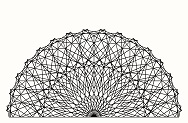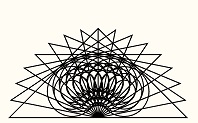


 |
 |
 |
Newton's Law 1. - Force equals mass times acceleration. F=maAcceleration times time equals velocity. at=v Velocity times mass equals momentum. vm=p Momentum equals kinetic energy with corrected definition of kinetic energy. KE=mv The incorrect definition of kinetic energy equals one half mass times velocity squared. ½mv² Ohm's Law - Volts equal Amps times ohms. V=IRExtended, not Ohm's law: Volts times amps equals watts. VI=W Newton's laws create the only basic element of physics that is correct. Ohm's law creates a convention in engineering which is suitable for the purpose. The extension to defining watts would be suitable, if watts were correctly defined as units of force and rate of energy addition rather than units of energy. Force is a major element of both Newton's laws and Ohm's law, while force is not understood in science. Force is properly applied in Newton's laws by describing its result, while force is not properly interpreted in Ohm's law in relating to energy. In Newton's laws, force equals mass times acceleration. Then the addition of time equals momentum as the correct definition of kinetic energy. Force is the rate of addition of kinetic energy to a mass. In Ohm's law, force is associated with volts, which is incorrect. Volts times amps are said to be watts of electrical energy. But watts are units of force as rate of energy addition, not units of energy. Watts need to be combined with time to get units of energy. That's why people pay for watt-hours of electricity, not watts. The convention of Ohm's law is suitable in engineering in setting the relationships between volts, ohms and amps, even though volts are misdefined as units of force and the extension into watts of energy is not defined properly. No one knows entirely what a force is. It's result is correctly described in Newton's laws. Giving force correct relationships to results is suitable for scientific purposes. But force is not given correct relationships to energy in electrical engineering. Volts are a product of force and can create force when combined with amps; but doing that is not how the process is described. Volts are said to be units of force independent of amps, while they only create force when combined with amps. But doing that requires a correct definition of energy. It's the incorrect definition of energy that forces engineers to define volts as units of force. When the definition of energy is corrected, watts get corrected as units of force. What then are volts? No one can understand the basic origins of volts, because the basic origins of force are not understood. If the definition of energy is corrected, which results in units of watts being corrected, then the electrical relationships are suitable for scientific purposes. Until then, the electrical relationships between volts, ohms, amps and watts are not correct enough to be proper laws of science. The result of the errors shows up in radiative transfer equations which are used to rationalize a nonexistent greenhouse effect in the atmosphere. Using the world's largest computers to produce the false claim that radiative transfer equations show 3.7 watts per square meter of energy less leaving the Earth than entering from the sun results in several scientific errors. One error is that watts are not units of energy, they are rates of energy addition, which is why people pay for watt-hours of electricity, not watts. The Fraud Authority Of The IPCC
|
|||||||||||||||||
 |
 |
 |
 |
 |